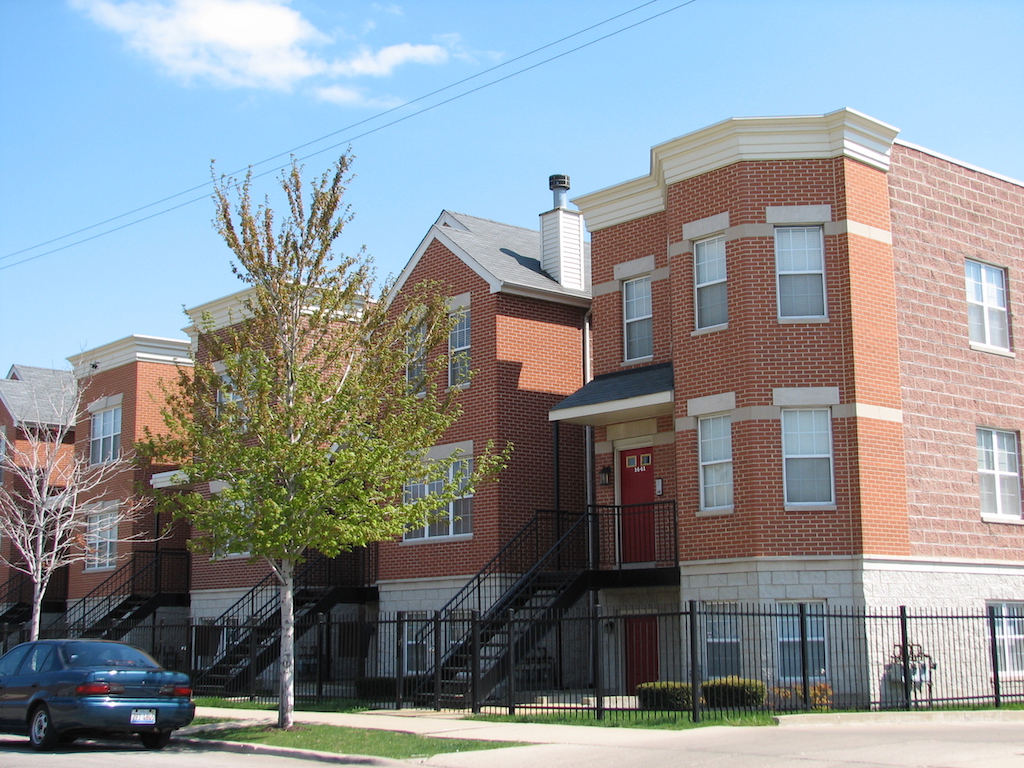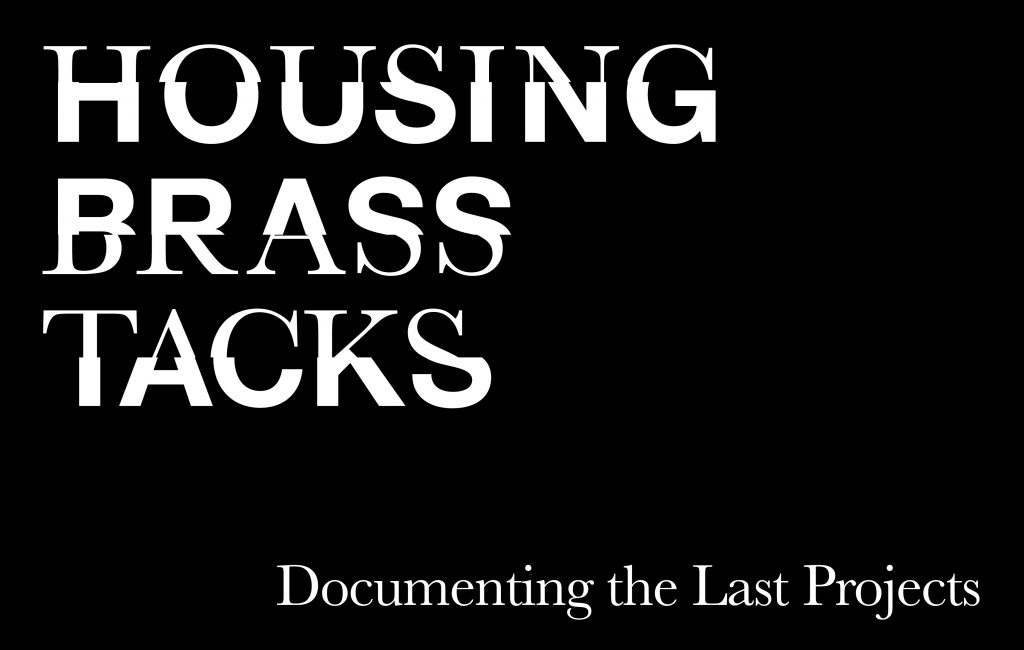
Documenting the last projects
Housing Brass Tacks is an informal discussion series designed as a primer on big ideas and essential mechanics in housing policy and development.
May 15, 2017
7:00 p.m.

New York City boasts almost 180,000 units of traditional public housing, defying the norm of demolition. In contrast, Chicago is in many respects much more representative of American attitudes toward public housing: vilified and deemed a failure, nearly all of the city’s high-rise public housing has been demolished. Codified in the city’s 2000 Plan for Transformation, a social experiment was set in motion to use federal funds to replace clustered public housing high-rises with new mixed-income neighborhoods.
For our second Brass Tacks film night, we’re screening 70 Acres in Chicago: Cabrini Green (Ronit Bezalel, 2014), which examines the hotly contested piece of real estate on the city’s north side that was the Cabrini Green public housing development. The film follows long-time residents and new arrivals over the course of two decades, as a predominately African American community was displaced and replaced, asking, who do our cities belong to?
The film screening will be followed by a discussion with Catherine Fennell, who will help us untangle some of the complex social, civic, political, and financial outcomes of public housing redevelopment in Chicago. Catherine’s work has explored another contentious laboratory for social change: the former Henry Horner Homes on Chicago’s west side, where she followed the dynamics of belonging as the neighborhood underwent its own mixed-income transformation.
Catherine Fennell’s work focuses on the decline and transformation of a key infrastructure of the 20th century US welfare state: subsidized housing. She interrogates how the material and social legacies of such housing shape the politics of difference, collective care and obligation, and utopian imagination in the urban Midwest. Her 2015 book, Last Project Standing: Civics and Sympathy in Post-Welfare Chicago, explores how an effort to demolish and rebuild troubled public housing projects also became one to rebuild the kinds of citizens who would be capable of caring for themselves and others, far better than any failed welfare bureaucracy. An emerging project follows how inhabitants of “shrinking cities” manage the physical aftermaths of houses that have ceased being homes and have instead become waste.
About Housing Brass Tacks
Understanding housing policy, finance, and regulation is daunting. One must wade through a sea of acronyms, untangle public and private interests, trace knotty financial flows, and decrypt complex bureaucracies. Making heads or tails of all this can take a lifetime, but the need to understand is urgent. We all feel New York City’s housing squeeze; increased affordable housing is a centerpiece of our mayor’s agenda; and sweeping changes in housing and community development policy may soon come at the federal level. The Architectural League is here to introduce (or refresh) our housing proficiency. Housing Brass Tacks is an informal discussion series designed as a primer on big ideas and essential mechanics in housing policy and development. We’re getting down to brass tacks: the fundamentals that structure this unwieldy topic.

